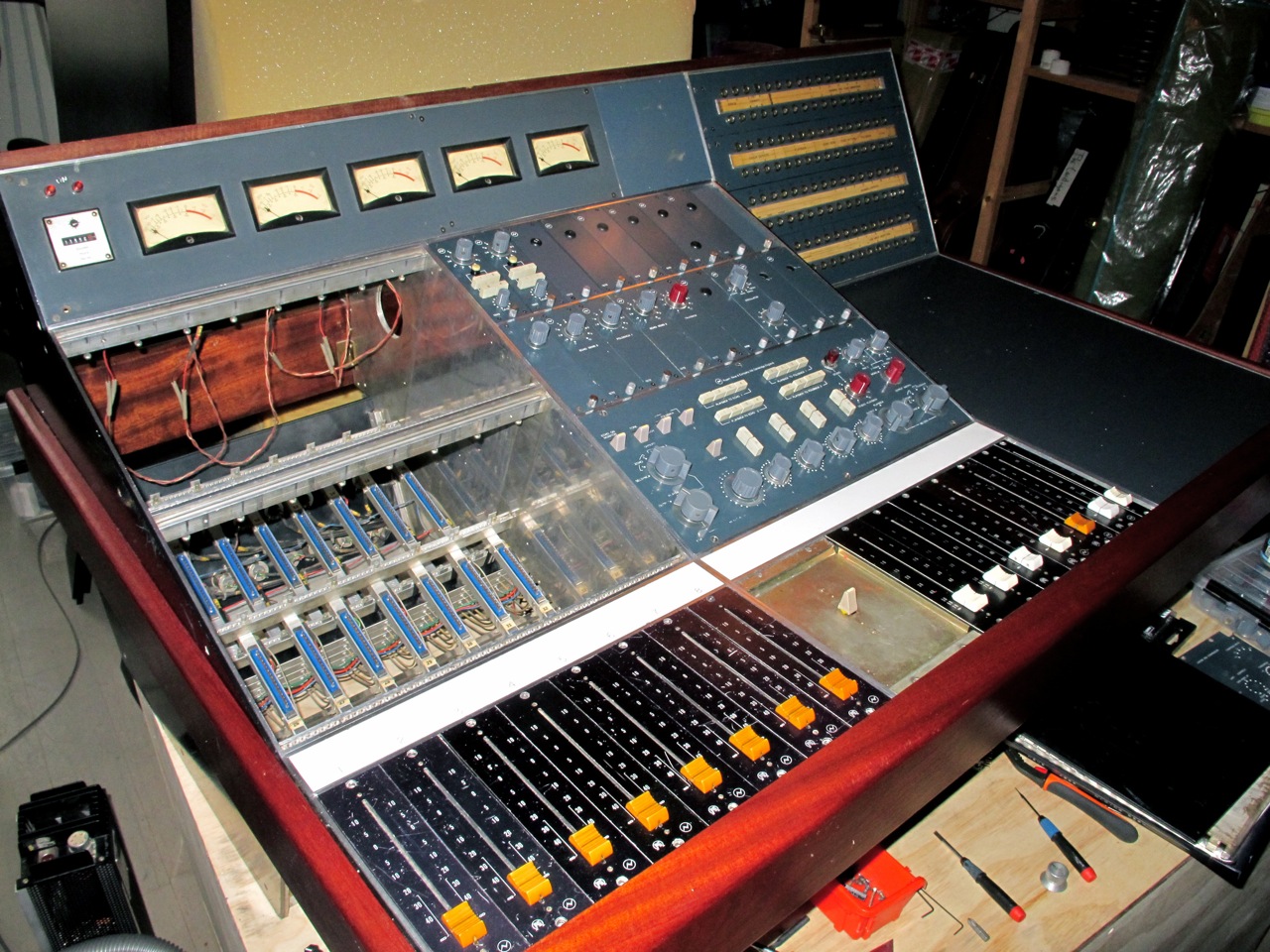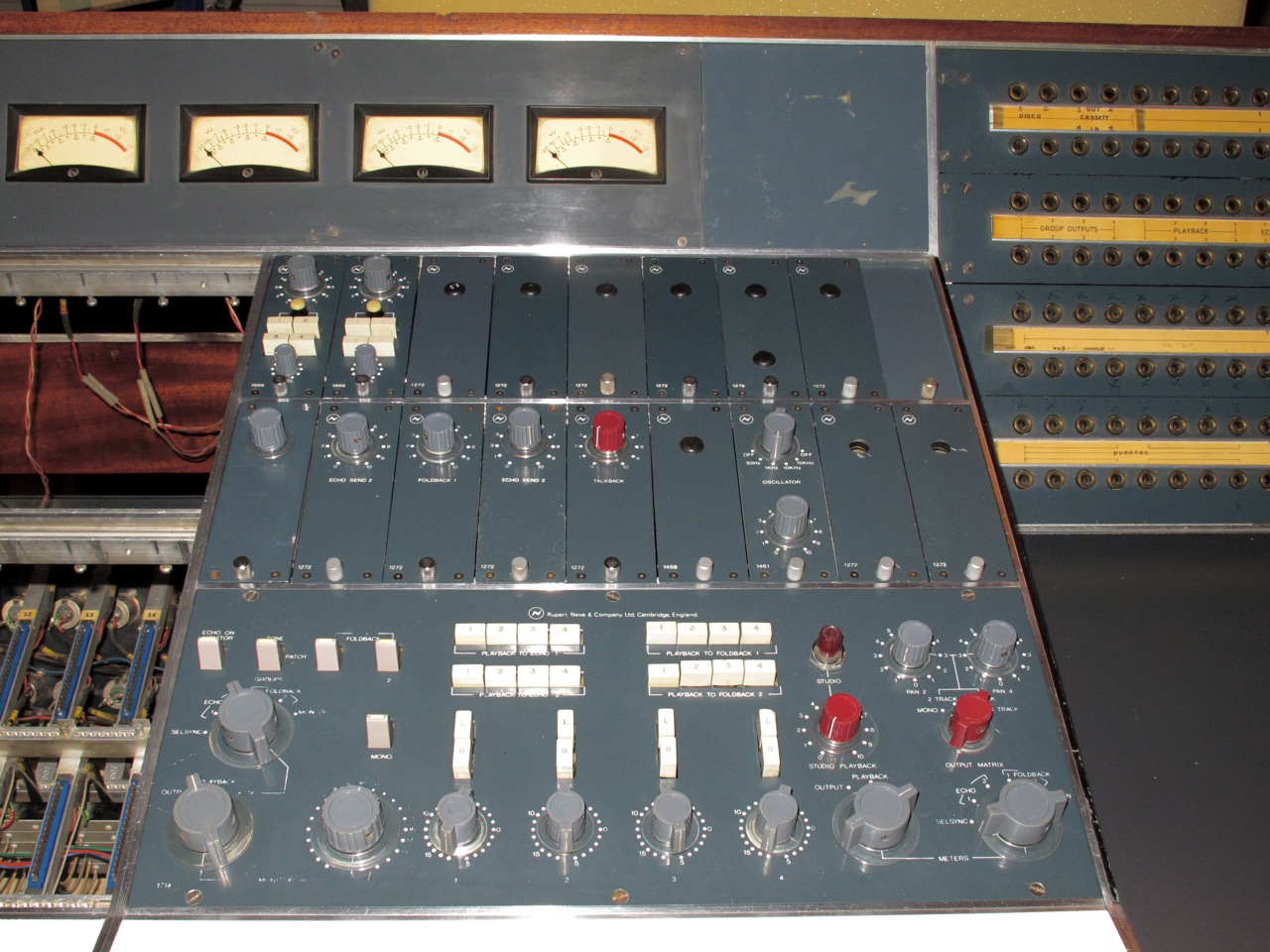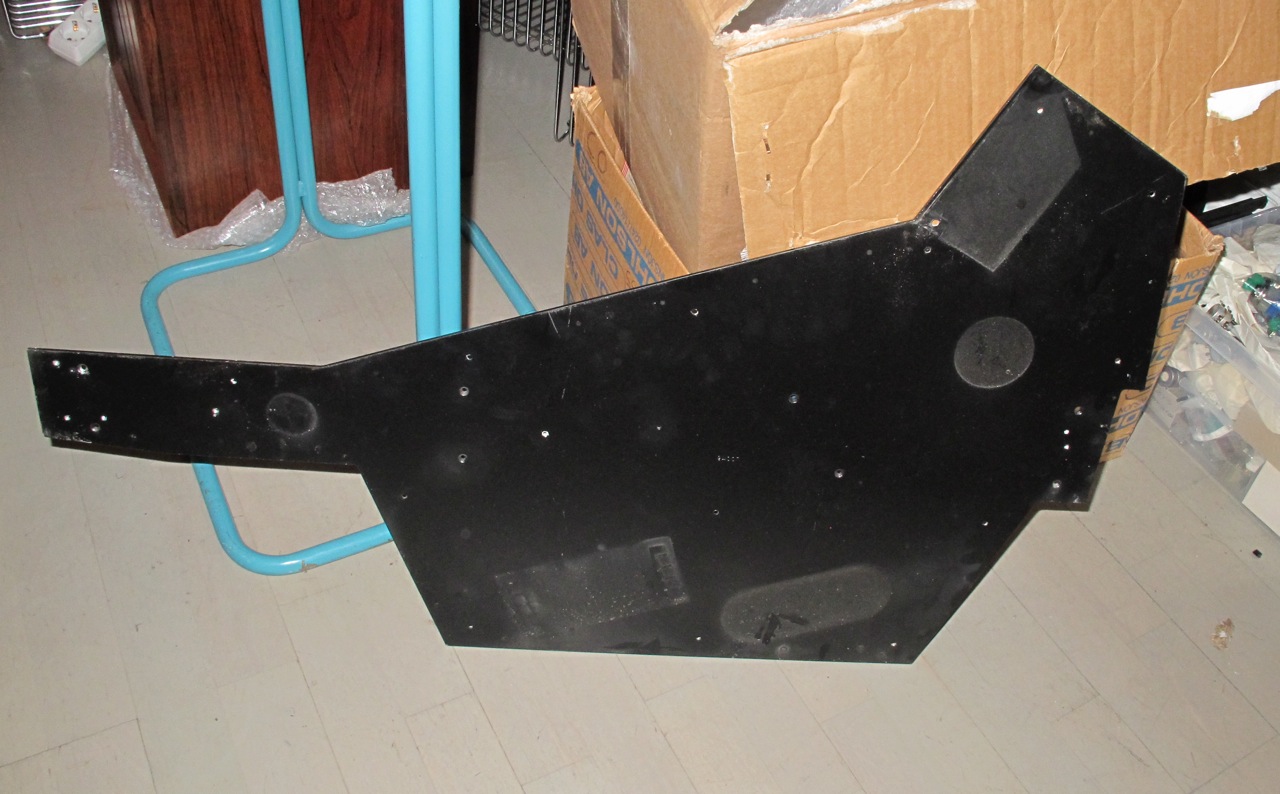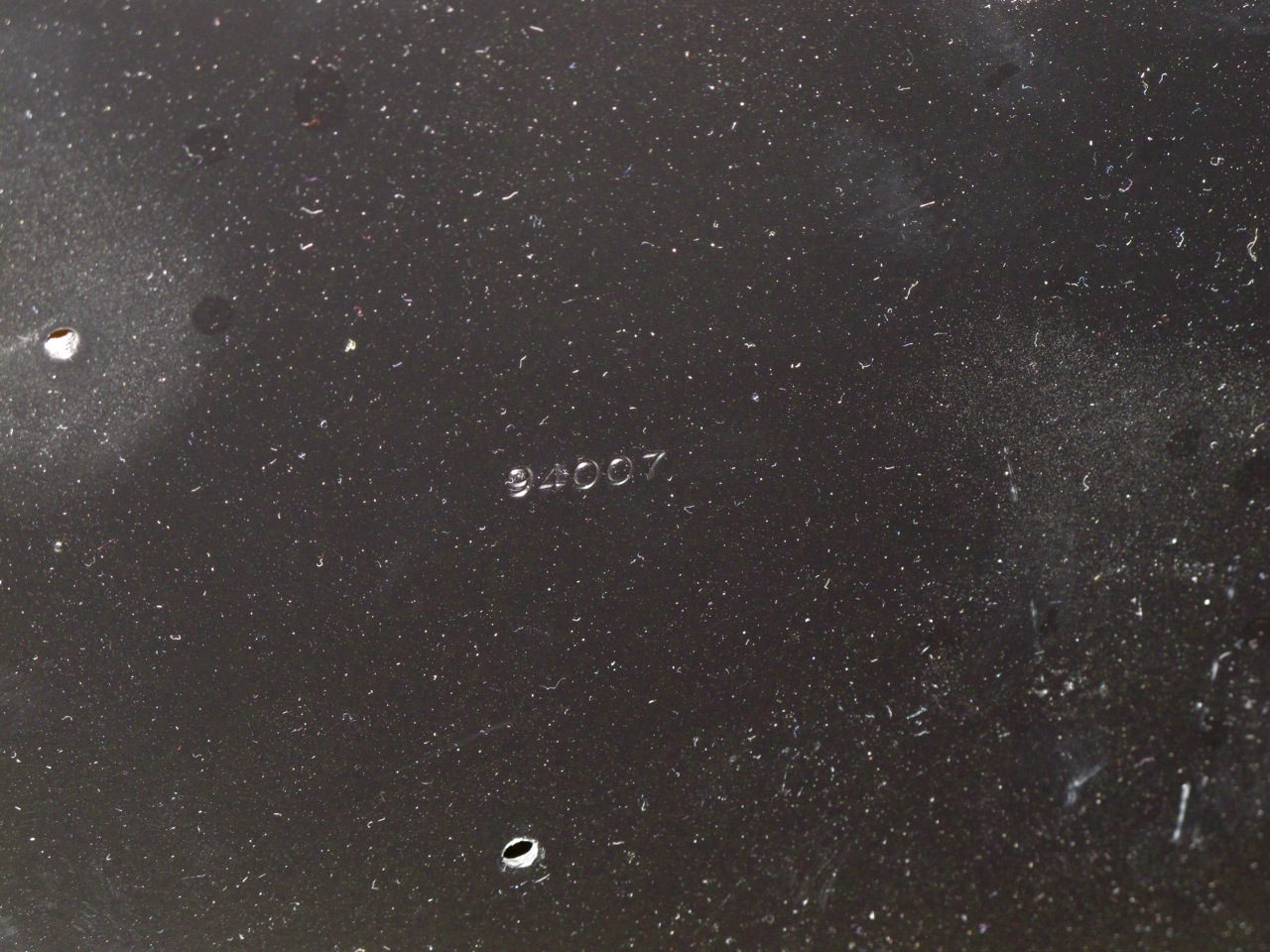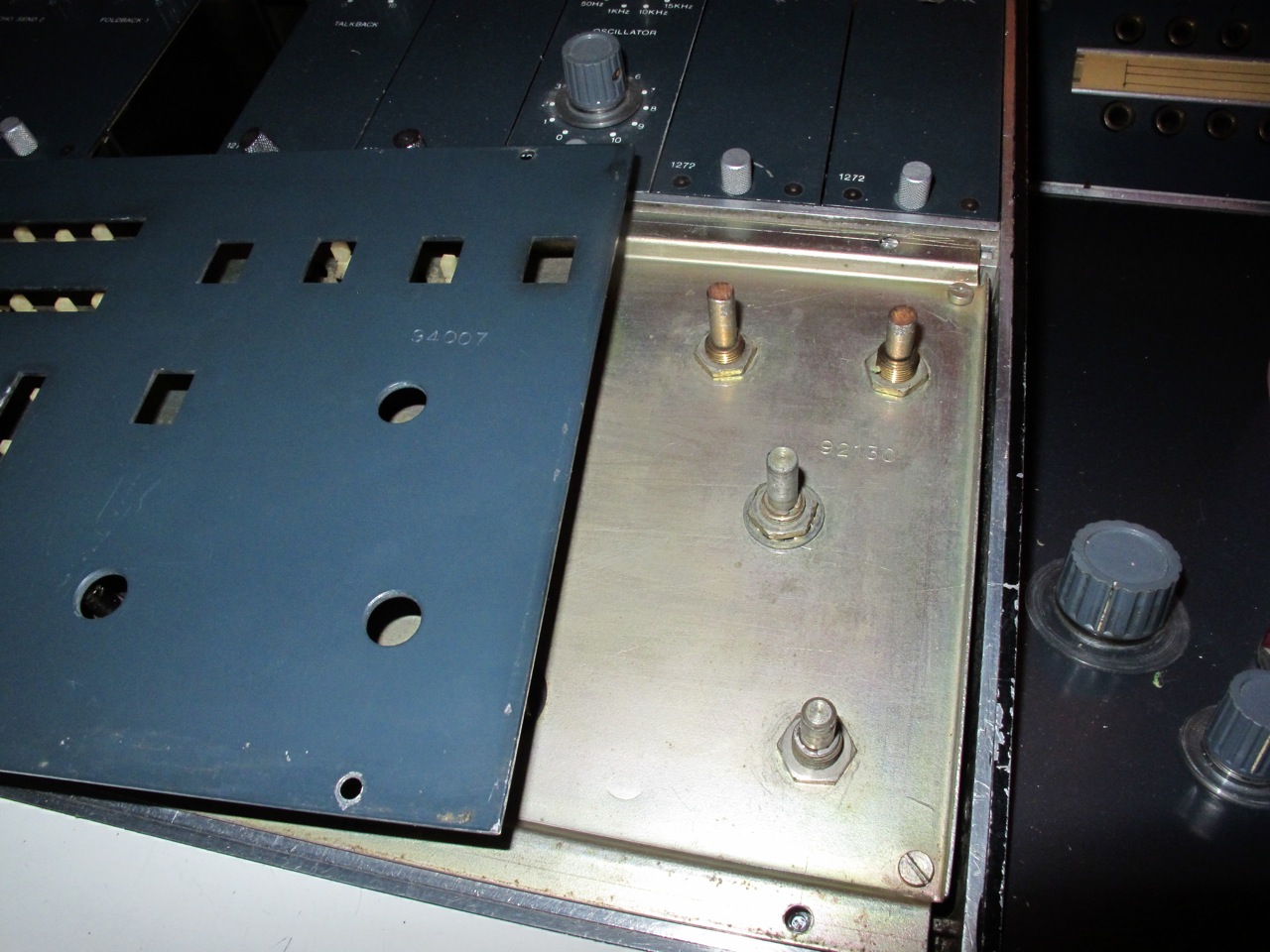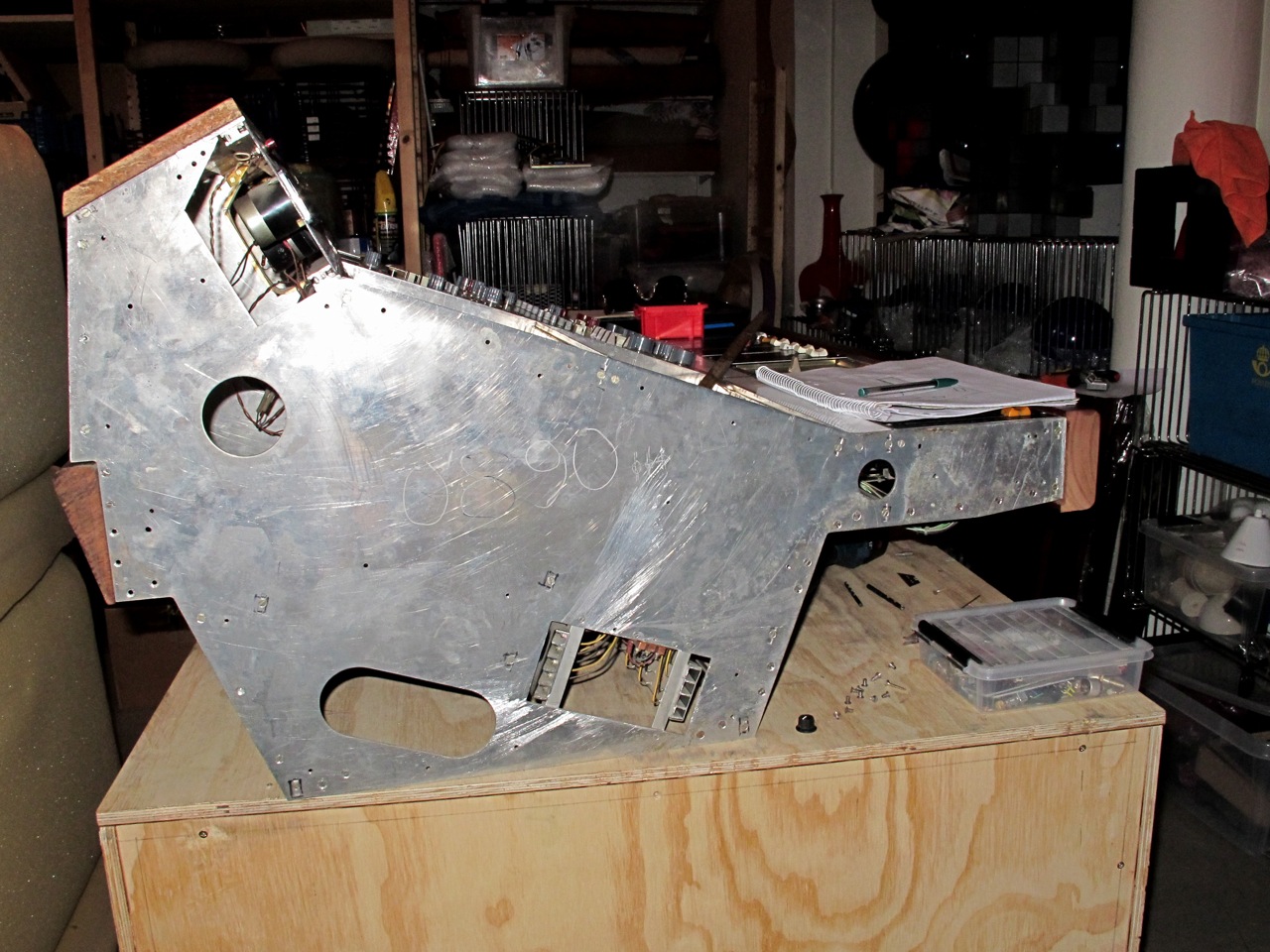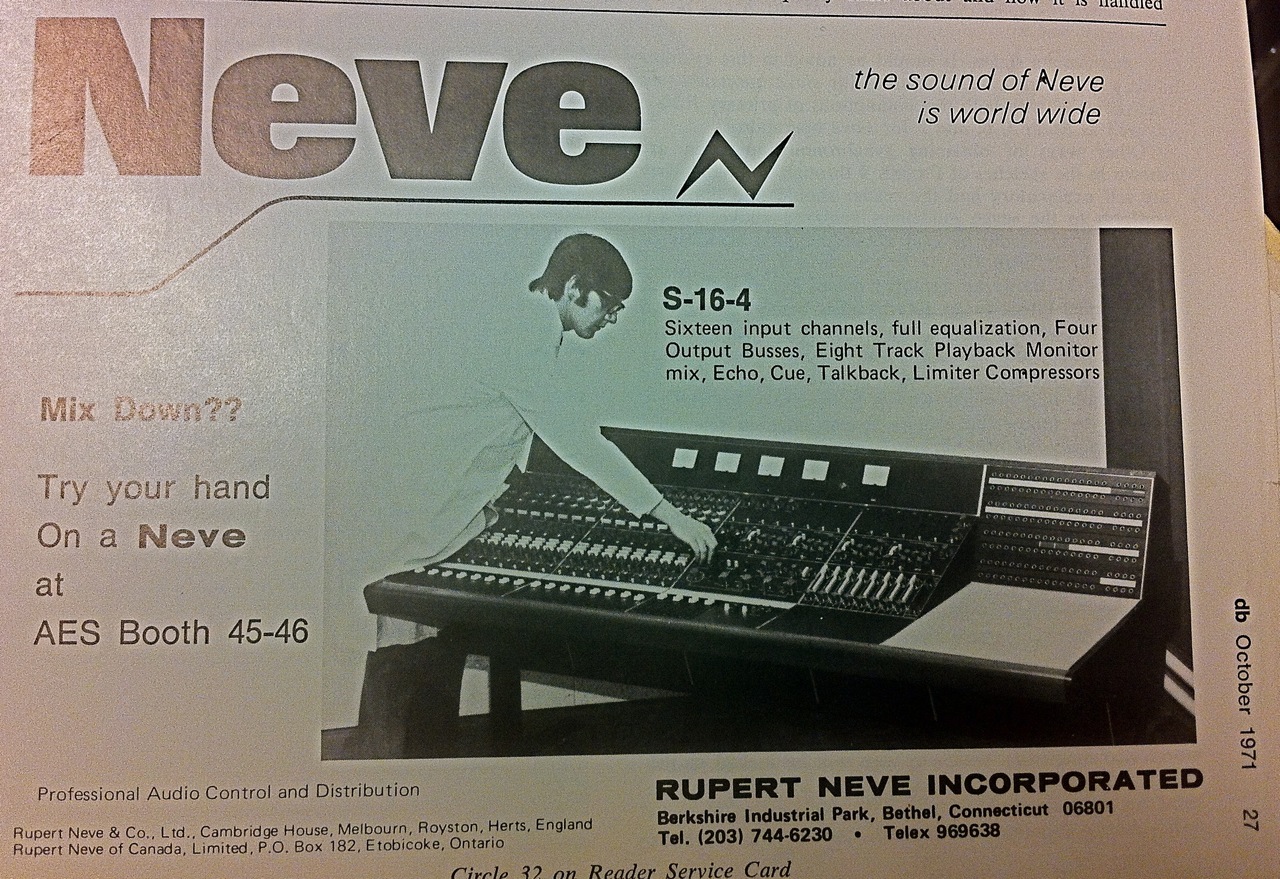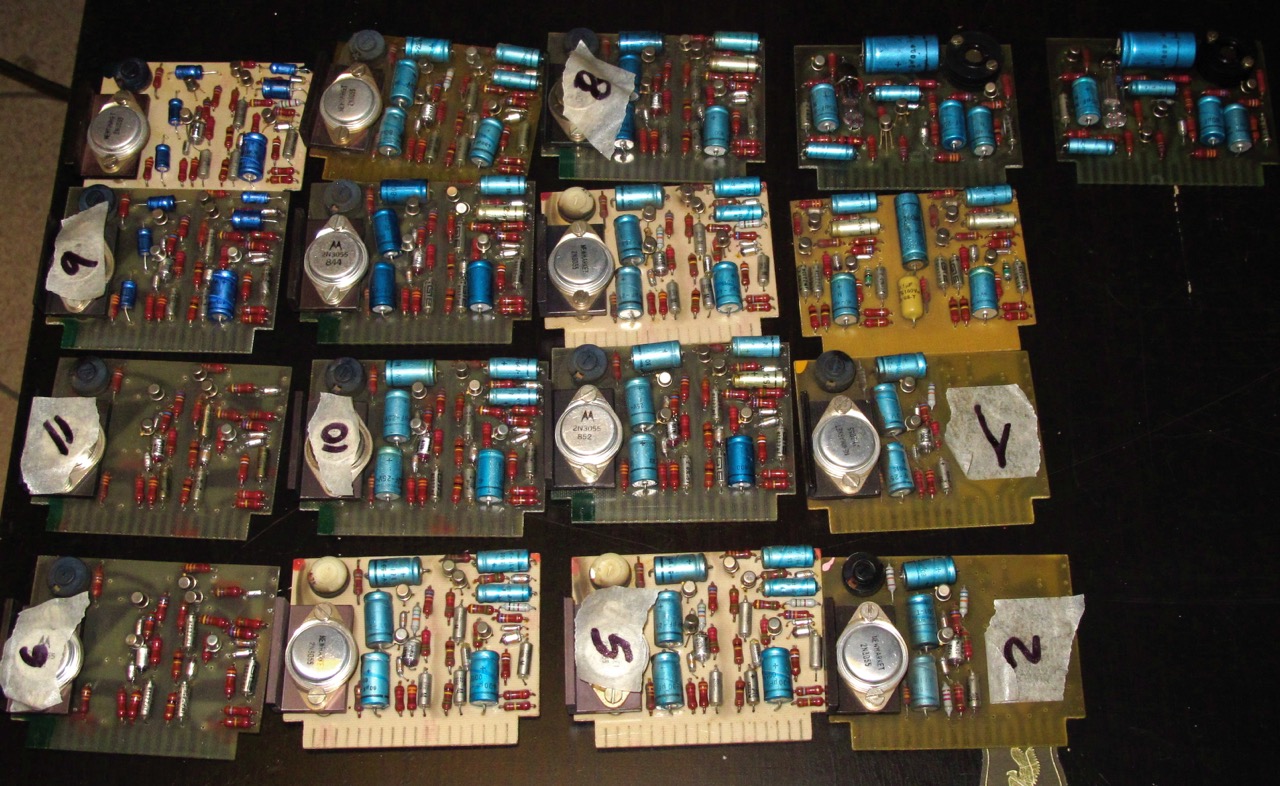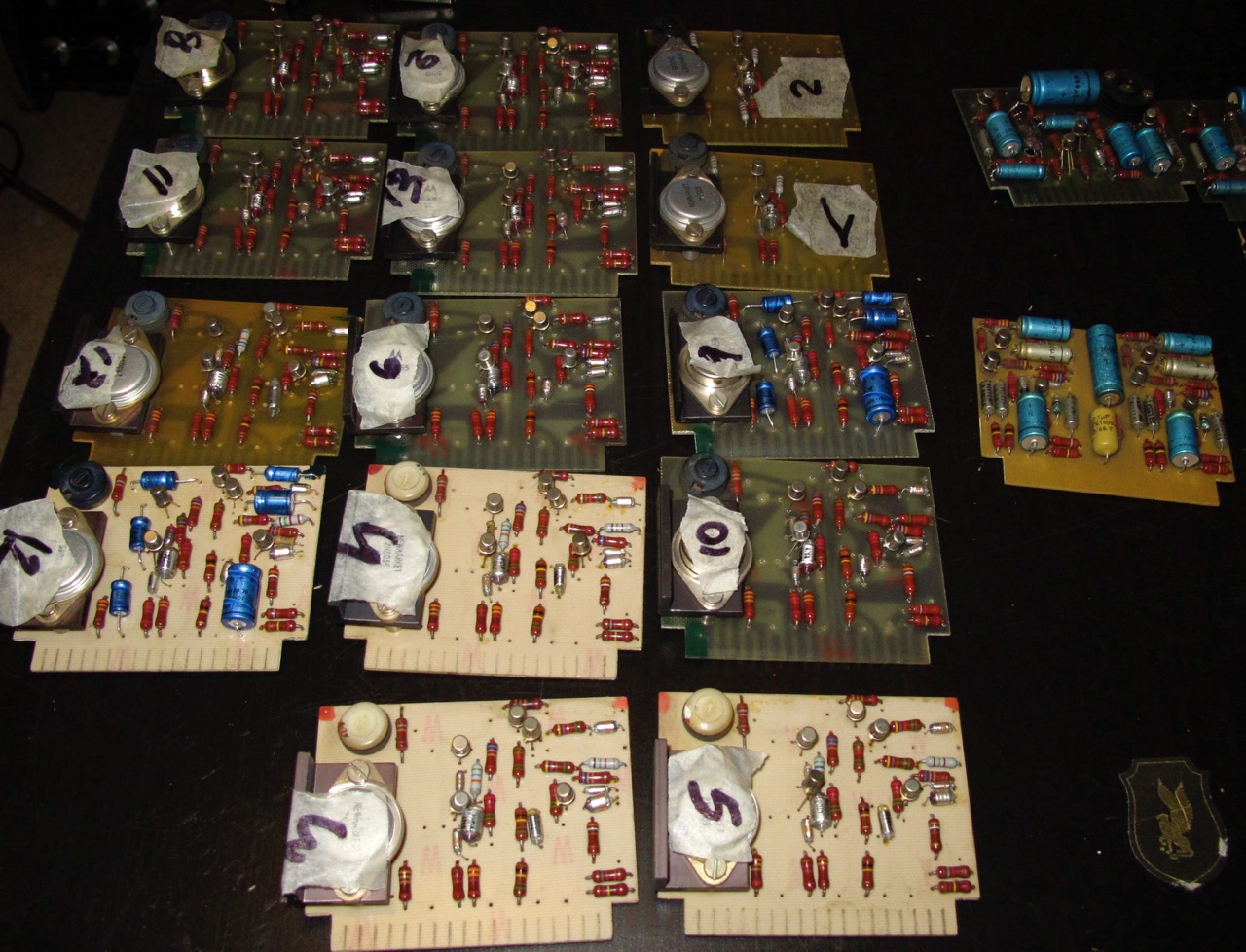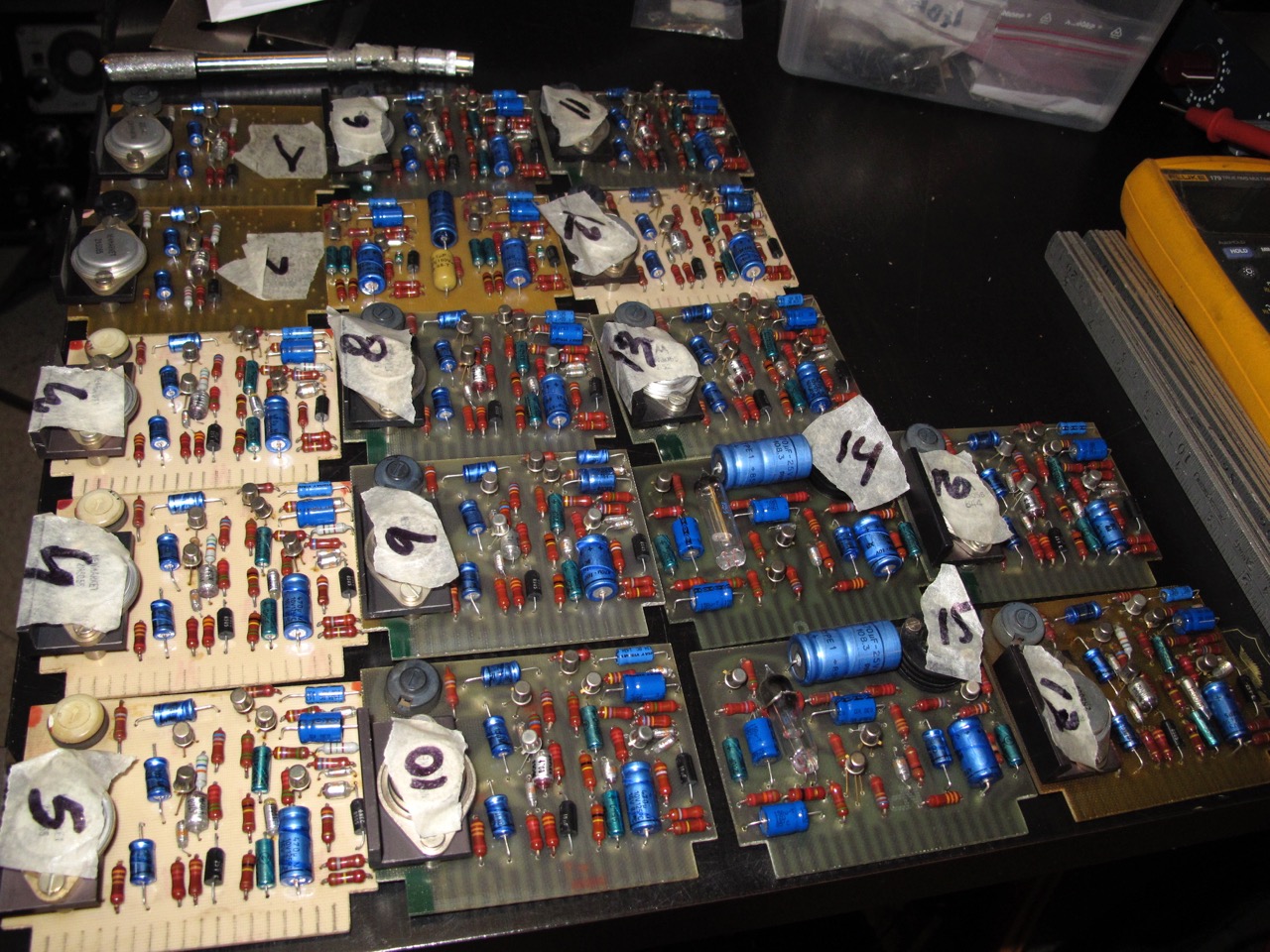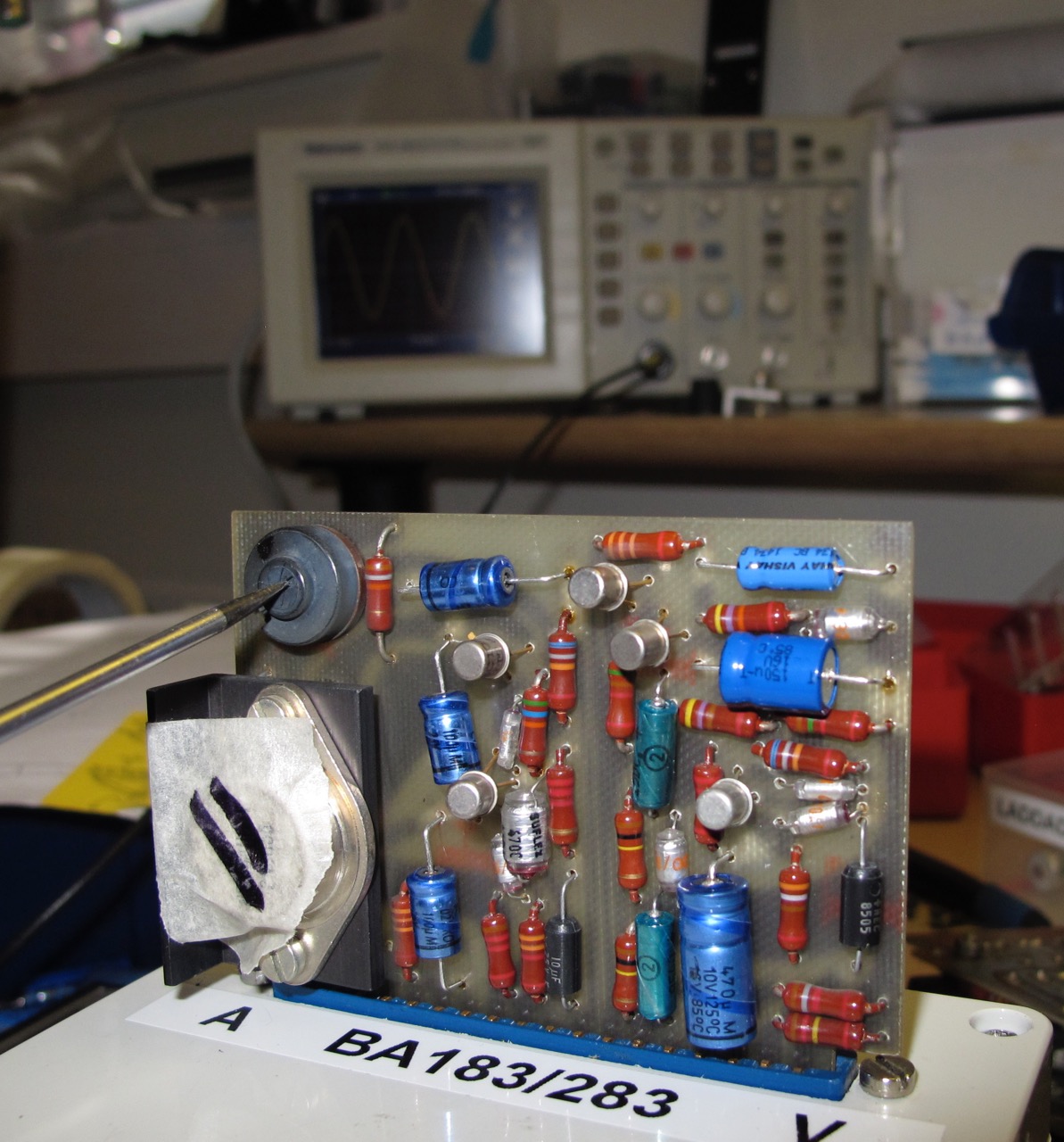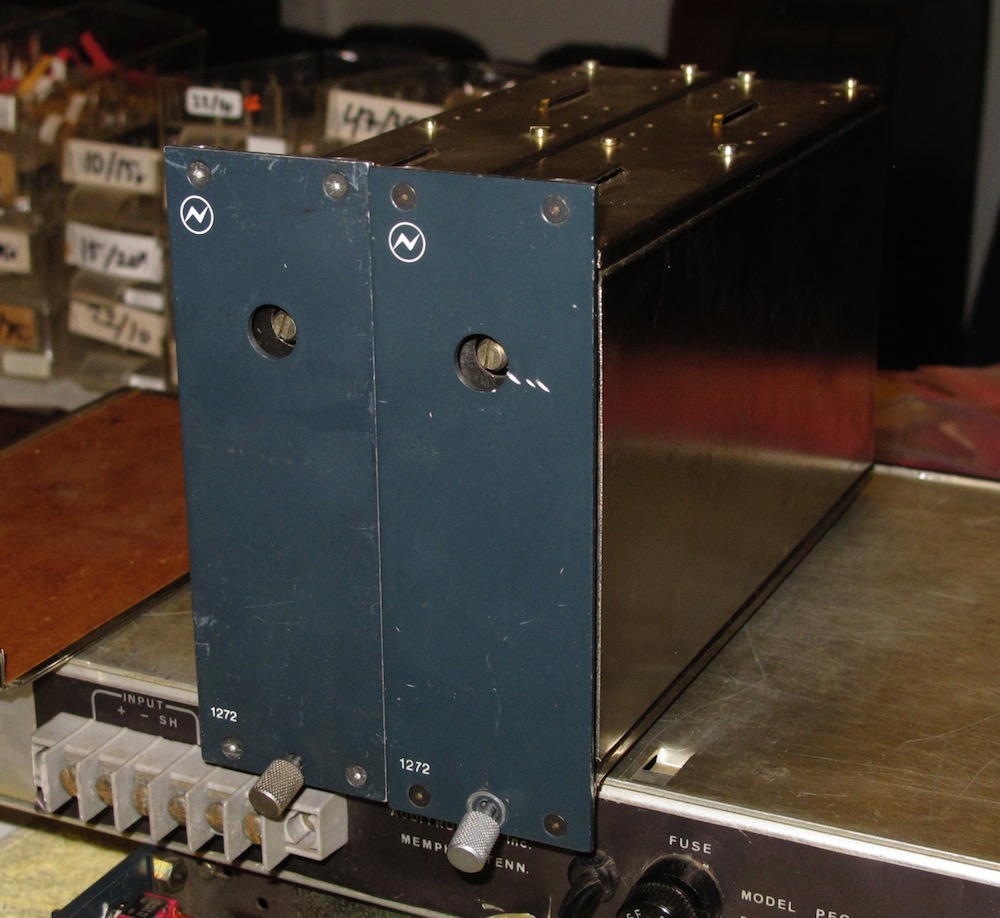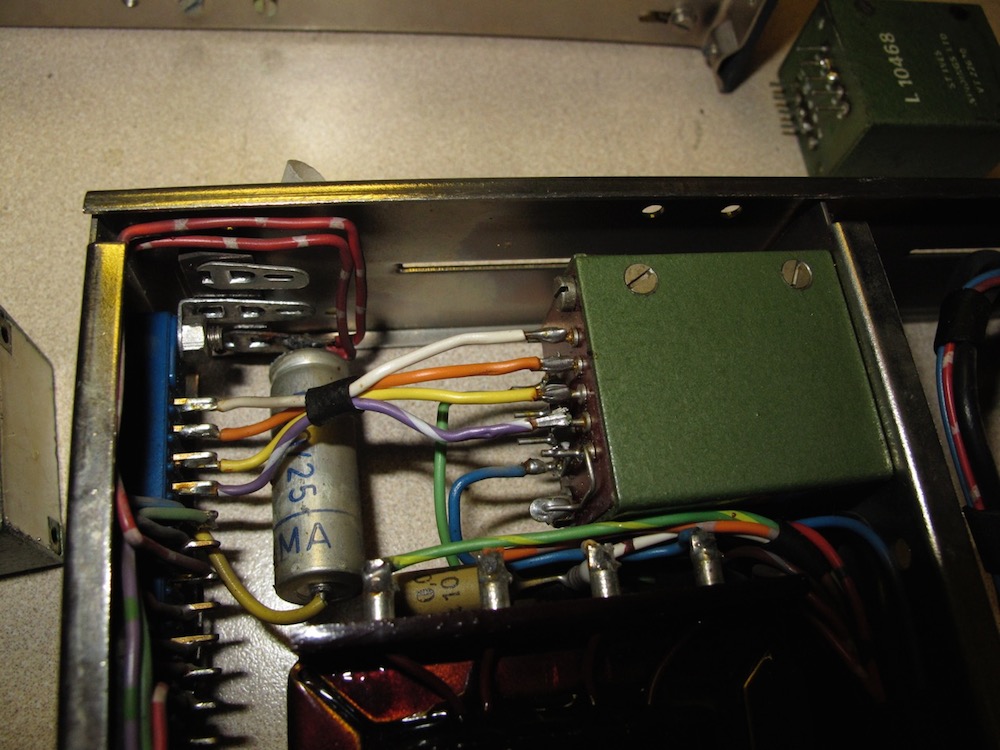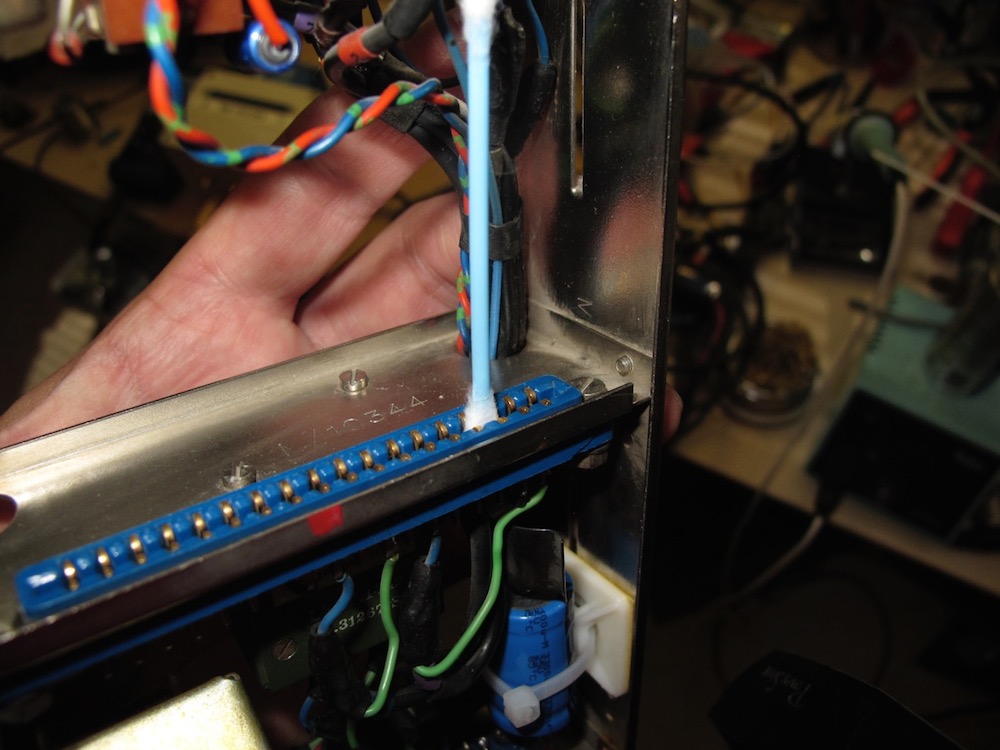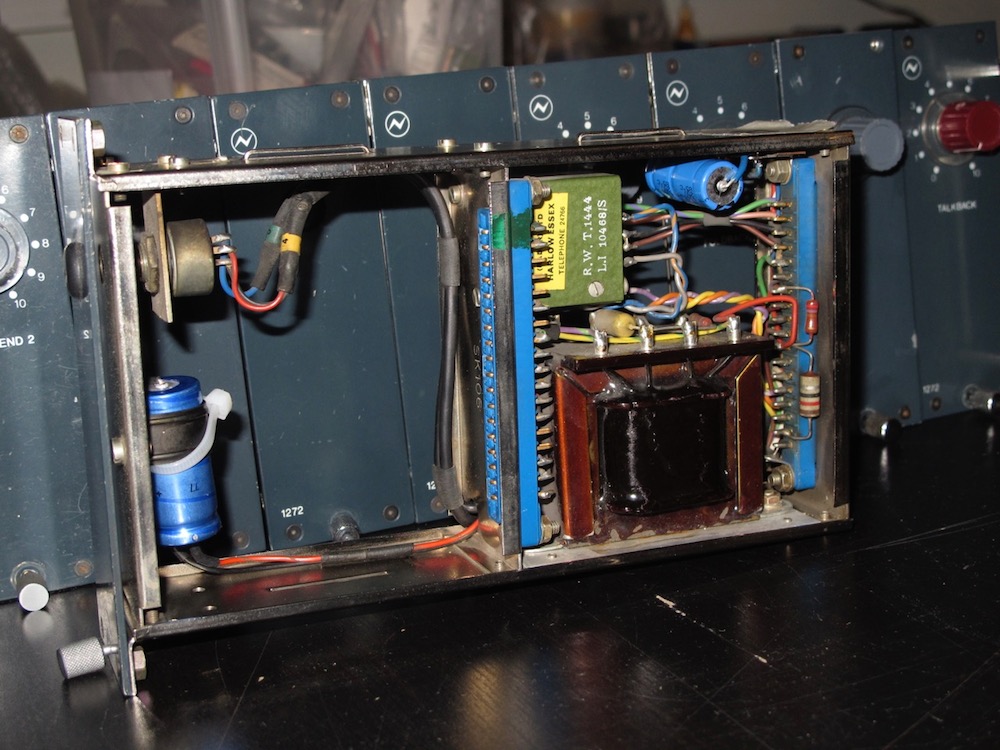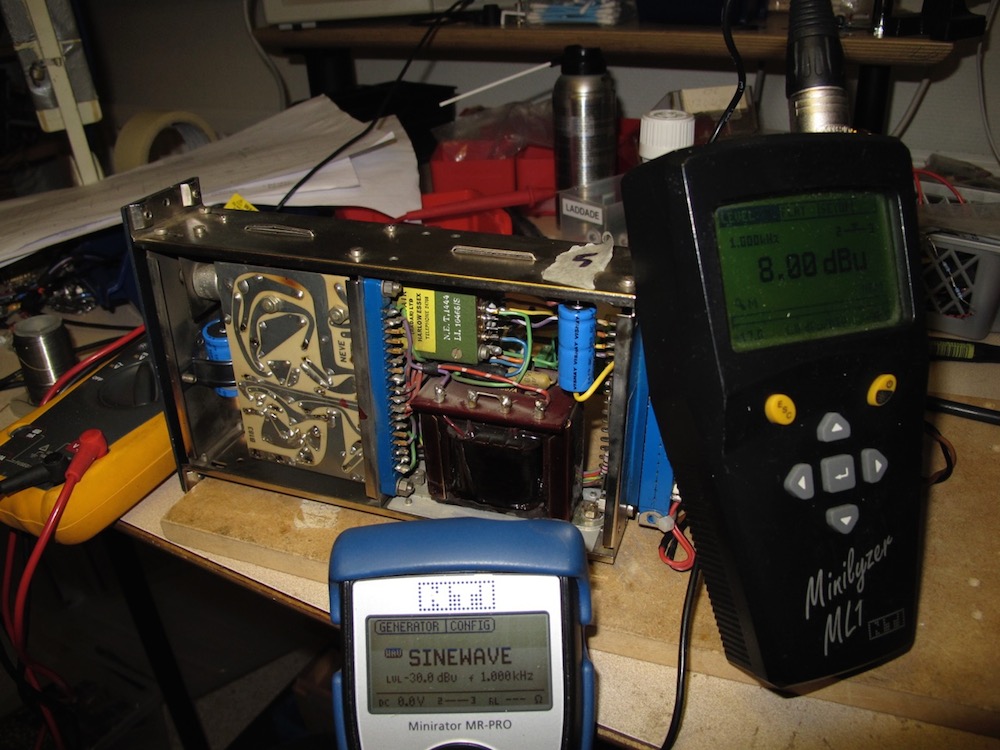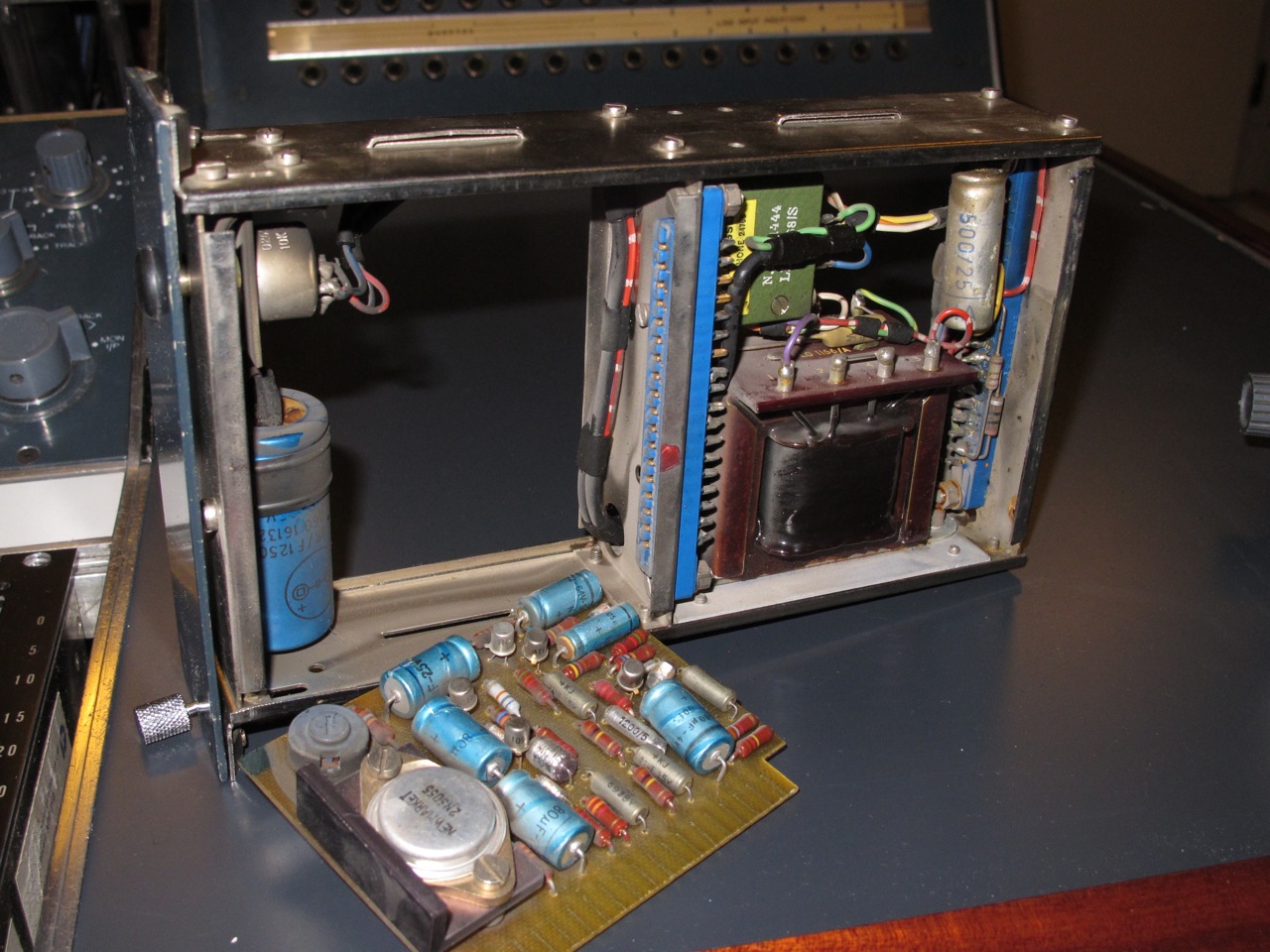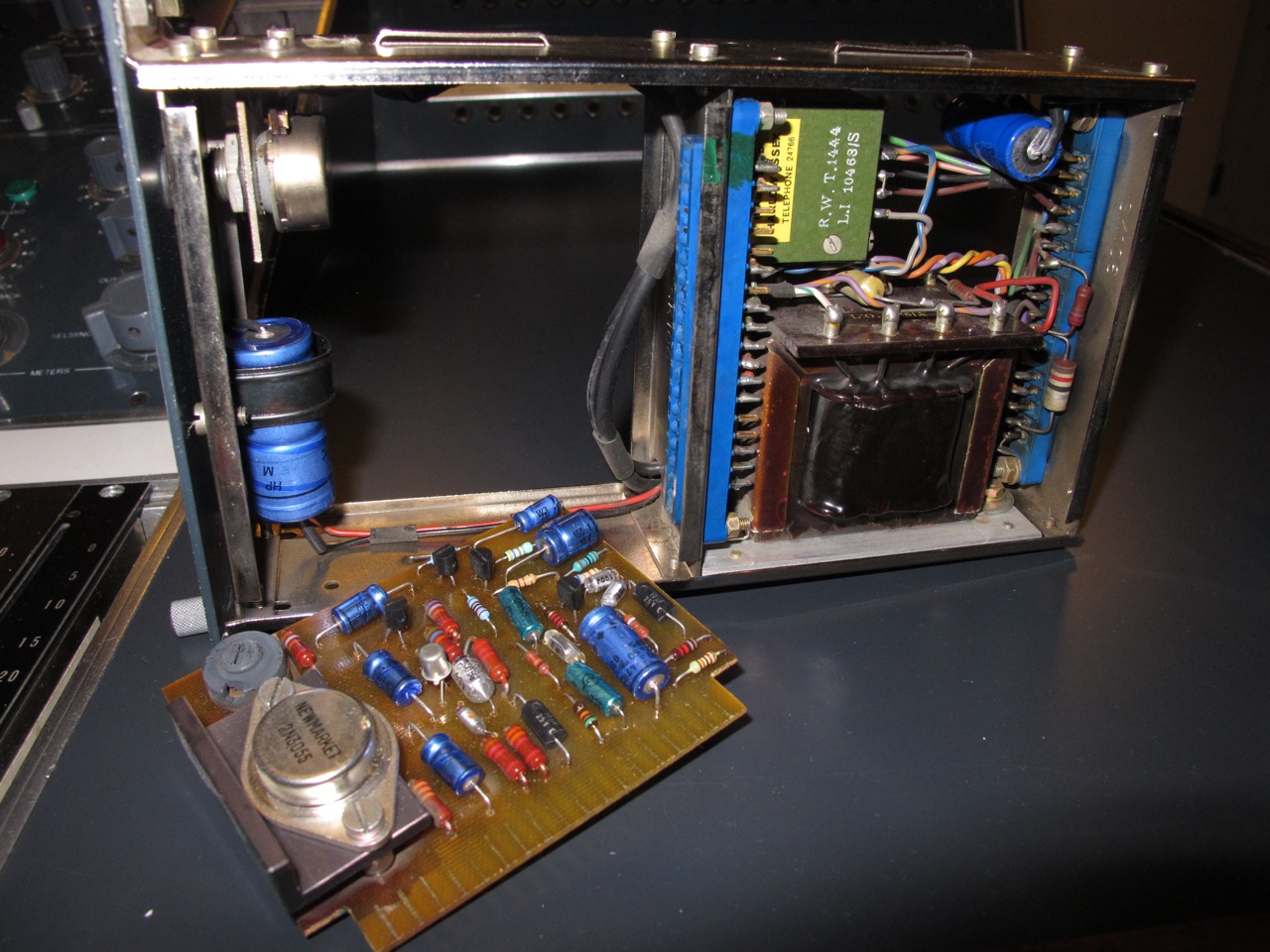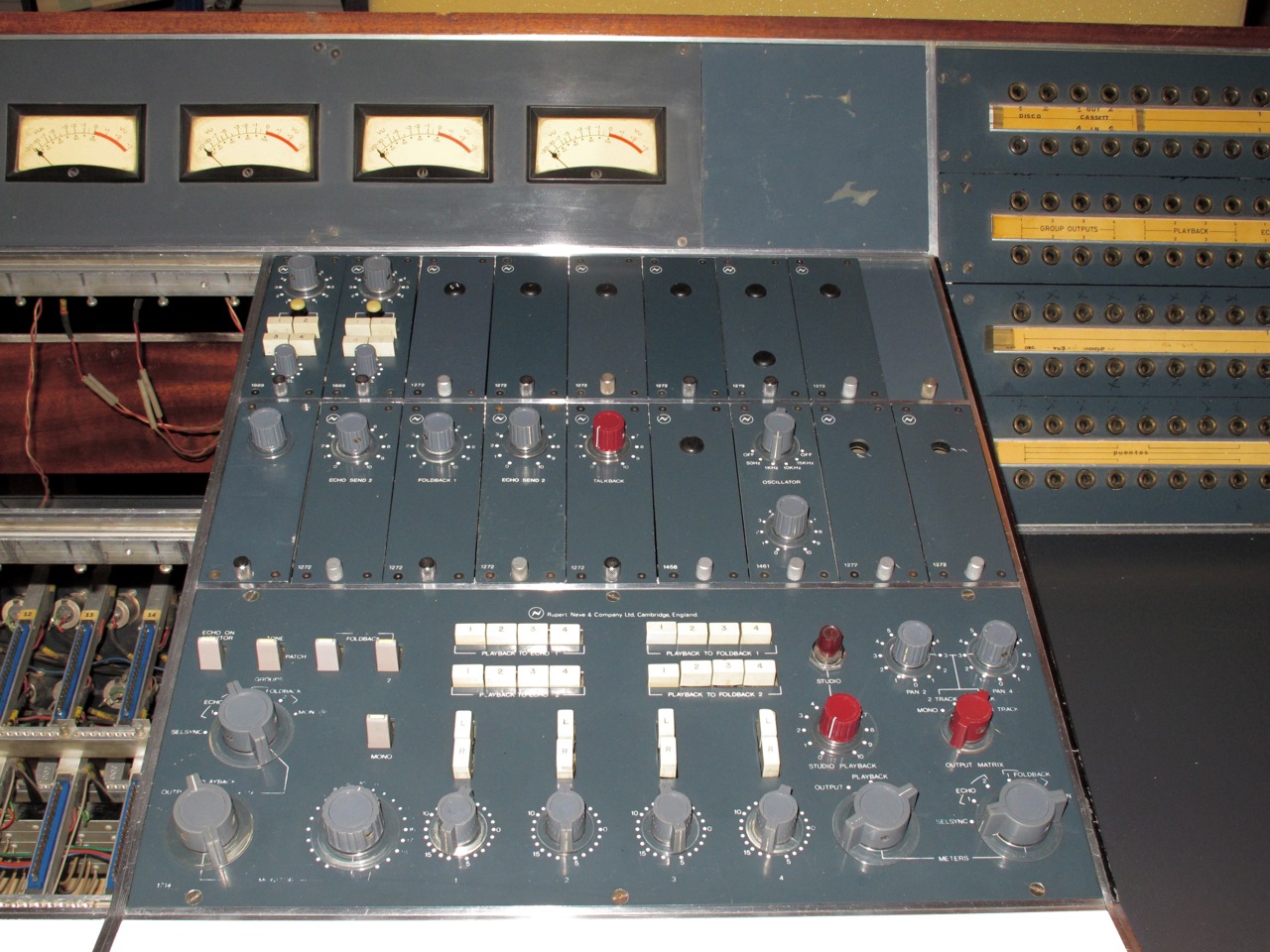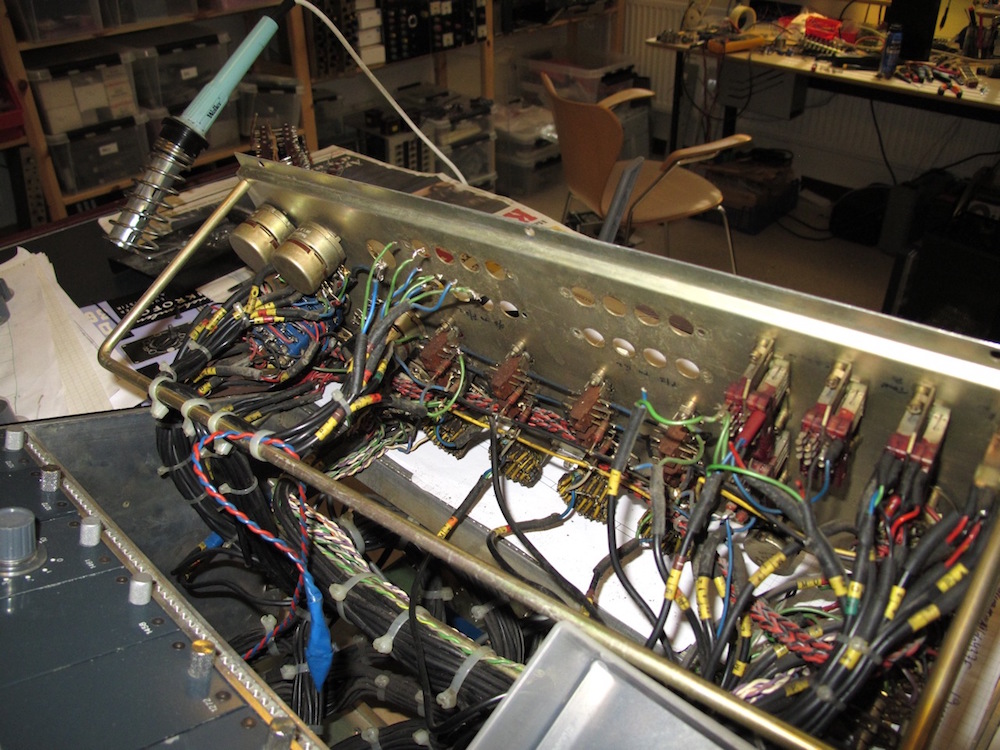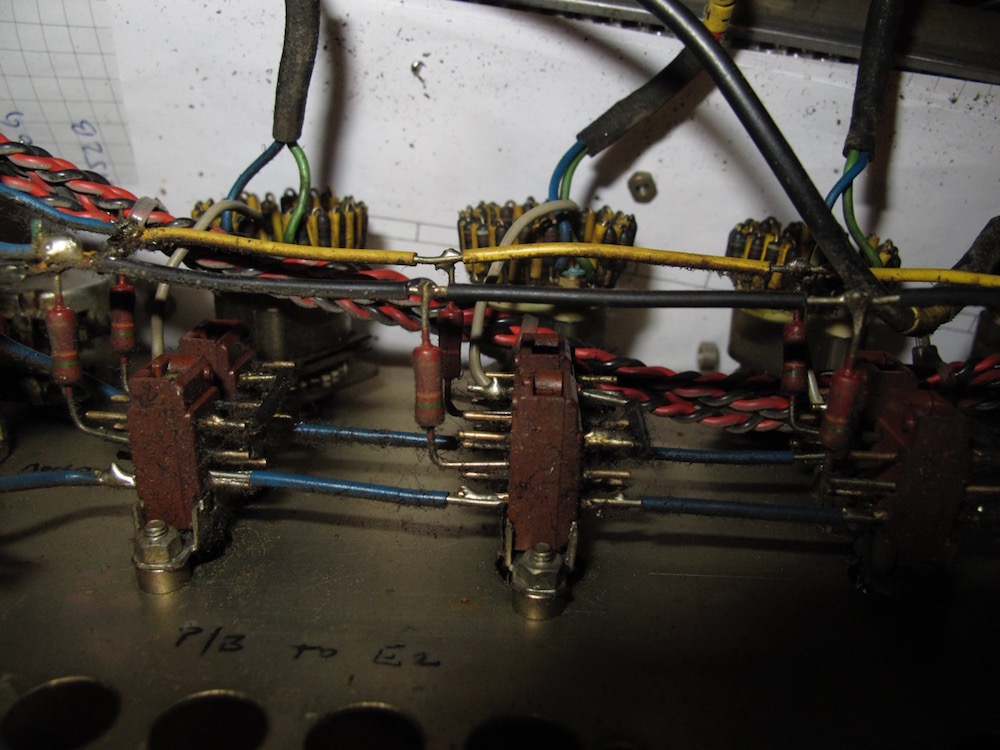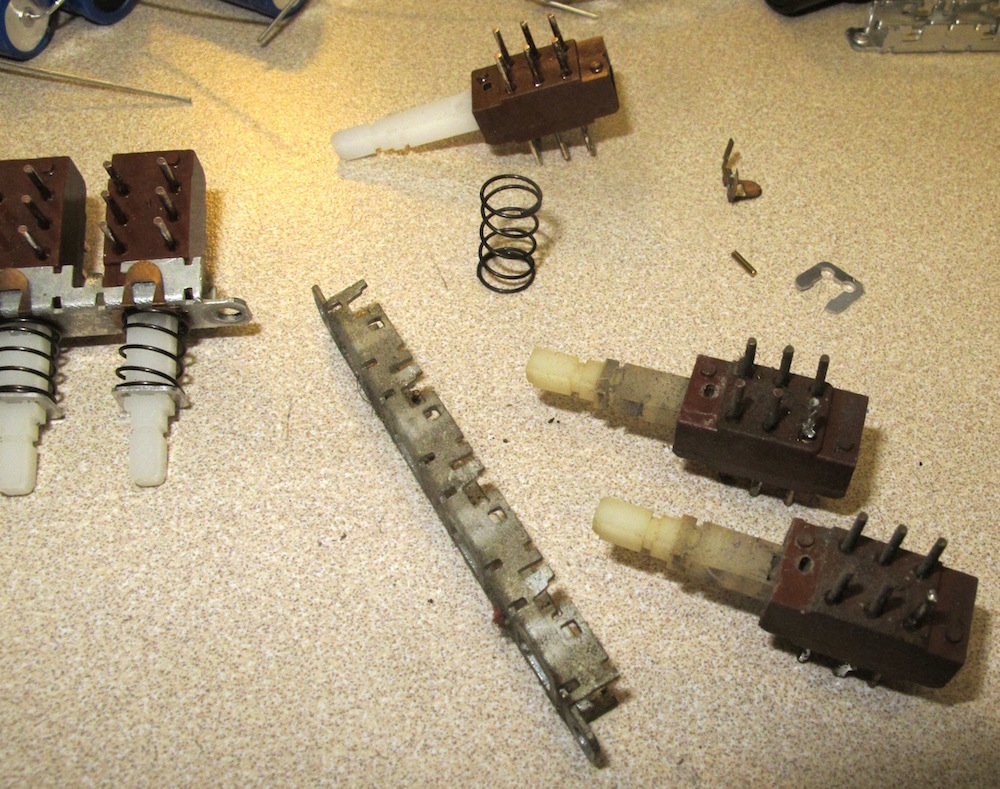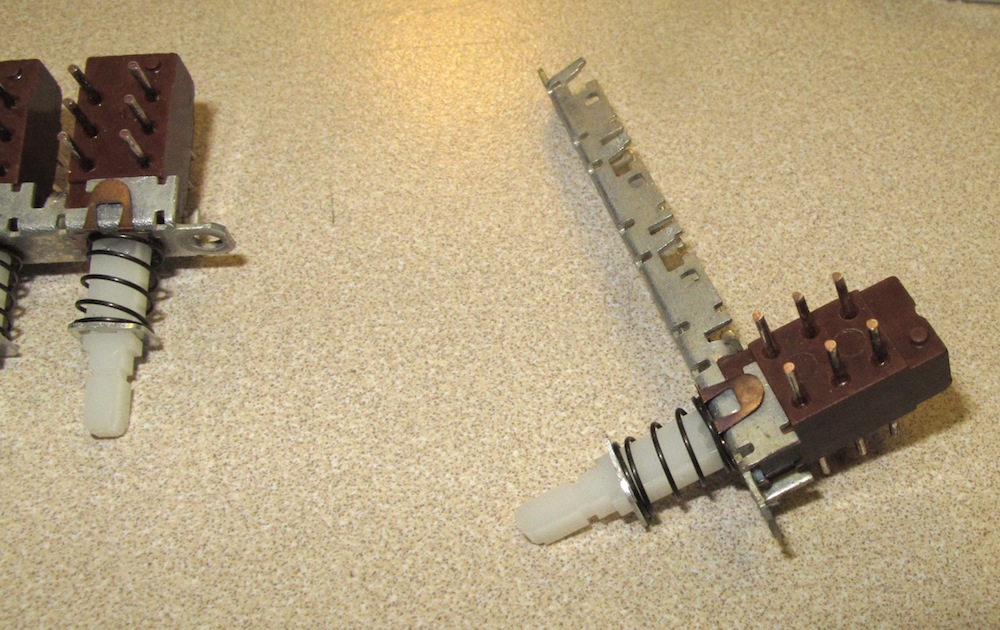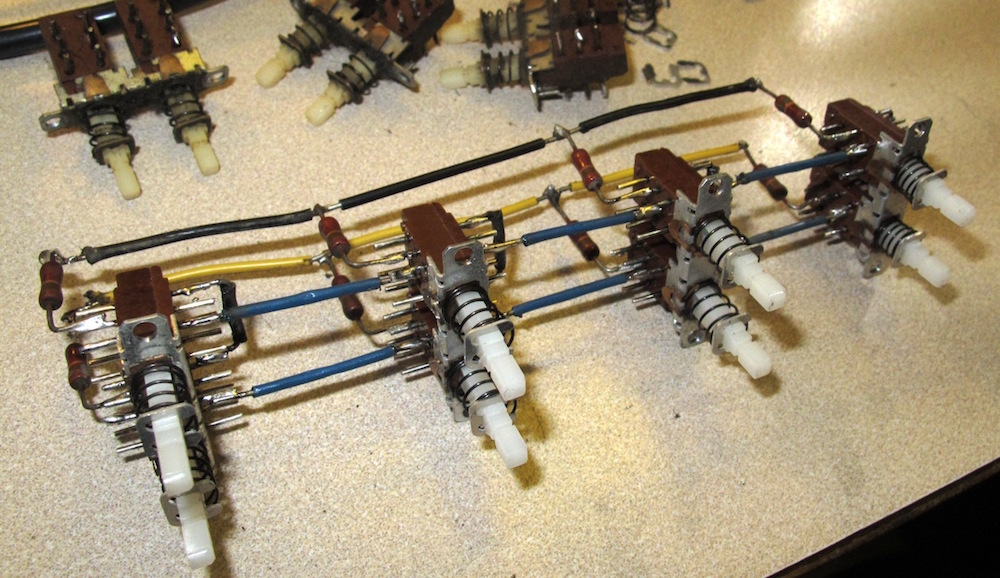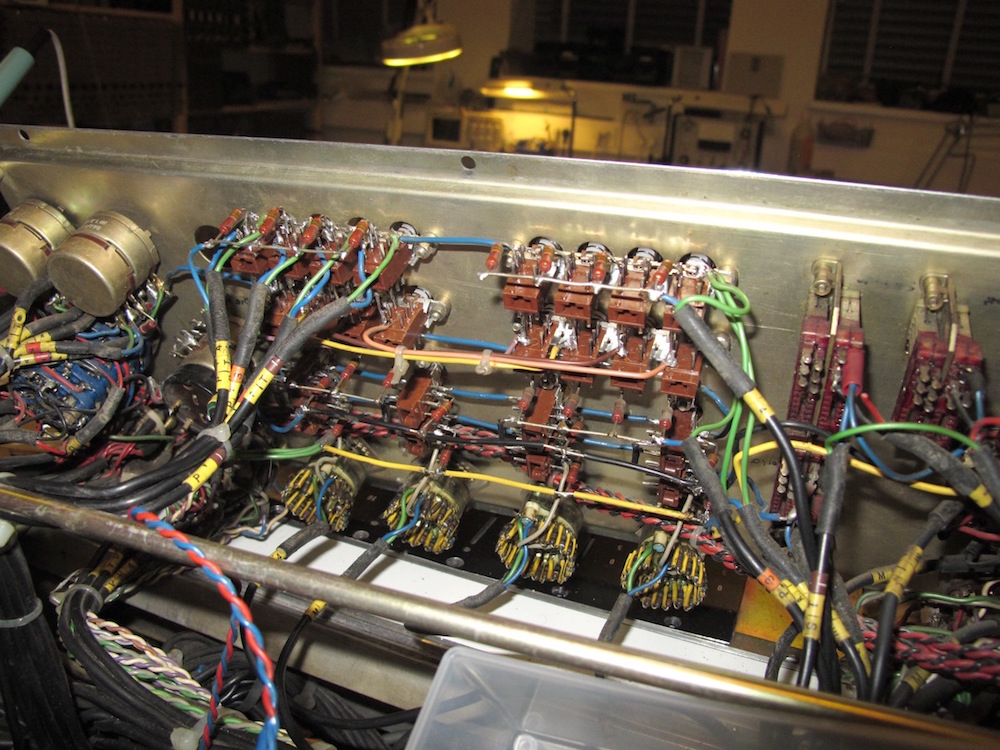A couple of years ago i reccieved a much battered Neve frame in a part trade from a friend in Spain.
It was mostly complete i thought at the time but all of the 1883 routing modules were gone.
The strange thing was that most of the 1272´s were still on board, those usually get s ripped out first if you (are stupid enough to) strip a desk.
It was strange configuration though with only 8 channels, a center section and a patchbay.
Pics are below.
I have run a studio for many years and worked most of my life in the music biz.
My first recording session ever was on a Neve 8014 paired with a MCI 2" 16 track recorder and those are still some of my best recordings
But i have always loved to take things apart and sometimes put them back together again...
In my studio i had two API 2448 desks (not at the same time) that i restored myself, learning by doing (one of them was found in pieces below a staircase in a cellar in Germany) and somehow i managed to get them both fully working and sounding pretty darn good.
I loved those desks but always wanted a Neve as well so when i had the chance to get this frame i jumped right into it.
When i finally got it home it was pretty clear that this was not its original configuration, someone had actually cut off a whole bucket from the poor thing!
I am often amazed on the stupid things people do to old gear, the API in the staircase was another weird story...
But the parts that was still there was pretty solid, just very neglected.
I spent a few months just looking at its beauty, but it was a tarnished beauty that i decided needed to relive its former glory.
"I shall restore this desk to its original specifications" was my mantra but had no idea what i was getting myself into.......
To be continued!
This is whtt the desk looked like when it arrived in Sweden.
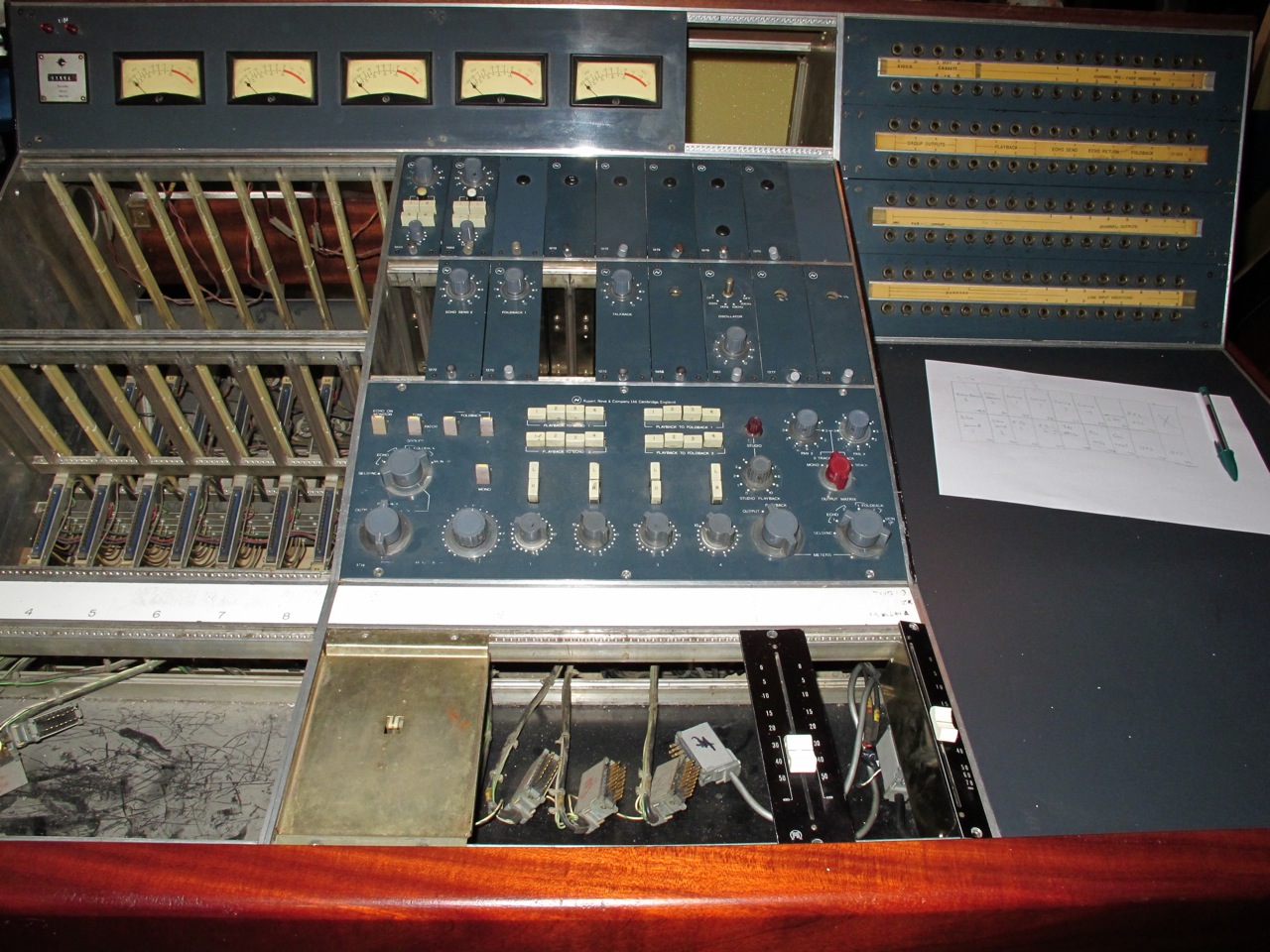

It was mostly complete i thought at the time but all of the 1883 routing modules were gone.
The strange thing was that most of the 1272´s were still on board, those usually get s ripped out first if you (are stupid enough to) strip a desk.
It was strange configuration though with only 8 channels, a center section and a patchbay.
Pics are below.
I have run a studio for many years and worked most of my life in the music biz.
My first recording session ever was on a Neve 8014 paired with a MCI 2" 16 track recorder and those are still some of my best recordings
But i have always loved to take things apart and sometimes put them back together again...
In my studio i had two API 2448 desks (not at the same time) that i restored myself, learning by doing (one of them was found in pieces below a staircase in a cellar in Germany) and somehow i managed to get them both fully working and sounding pretty darn good.
I loved those desks but always wanted a Neve as well so when i had the chance to get this frame i jumped right into it.
When i finally got it home it was pretty clear that this was not its original configuration, someone had actually cut off a whole bucket from the poor thing!
I am often amazed on the stupid things people do to old gear, the API in the staircase was another weird story...
But the parts that was still there was pretty solid, just very neglected.
I spent a few months just looking at its beauty, but it was a tarnished beauty that i decided needed to relive its former glory.
"I shall restore this desk to its original specifications" was my mantra but had no idea what i was getting myself into.......
To be continued!
This is whtt the desk looked like when it arrived in Sweden.





